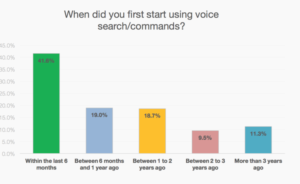Cold email rejection is never fun. You take the time to research your prospect, you know your product can help them, you carefully tailor your opening email to speak to them personally, and you hit the ‘Send’ button with excitement. You just know they’re going to be excited to hear what you have to say.
But the response is, “No thanks,” or, “Maybe later.” Take a breath before you move that email into the trash and move on. This response is great news!
No, really.
Cold email rejection means one thing – knowledge. And Not only did your prospect take time to write you back, but they also sent you a valuable nugget of information that you did not have before. Now you can further tailor your message to add additional value and create new opportunities.
Look at this this way: the reason no one is excited by cold emails is that you’re creating more work for them. Now they’ve got an email to respond to that they didn’t ask for. So go into it knowing that. You want your email to make the value you’re offering them so apparent, that it’s obvious you’ve actually made their lives easier by reaching out.
However, you’re talking to a stranger! It’s not always possible to nail it on the first try. That’s why with a little patience, professionalism, and tenacity, it’s possible to turn a cold email rejection into a sale.
Here’s how to respond to cold email rejection:
- Ask a question.
Research shows that emails that have one to three questions are 50% more likely to get a response. So instead of sending a, “I will follow up in three months,” response to your Maybe Later prospect, ask if you can begin sending them your email newsletter. They’ll be more likely to respond. If they say yes, you can keep your brand top of mind with consistent updates, while providing additional value to a prospect who will eventually be ready to buy.
Remember – most prospects that you contact won’t be ready right away. Some estimates are that less than 40% will be ready to buy right now. Snagging a prospect before they’re ready to buy is a great time to create trust with your brand and add value before they’re ready to buy so when they are, they come to you.
- Are you talking to the right person?
For most companies, only one in four prospects is a legitimate lead – meaning only 25% of the emails you send make it to your target audience and might buy your product or service. Knowing who your ideal client is can be tricky, but it’s worthwhile. If you are sending a lot of emails and getting few responses, it might be that you’re just not reaching the right people to begin with.
The solution is to create an image of your ideal client. The more specific the better. Not only will it help your salespeople (or you) to reach out to the right prospects to begin with, but it’ll help you tailor a message that will speak to them. If your ideal clients are honeymoon couples between 20 and 30, your messaging and value propositions will look a lot different than if your ideal clients are CEOs of financial institutions.
Take a step back.
You might be seeing cold email rejection because you didn’t offer something that makes your prospect’s life easier. Sales is all about identifying a need and offering a solution that’s easy to say yes to. Even if your prospect didn’t respond to your main value offer, there might be something else that you can offer them instead. After all, most companies can offer multiple benefits with the products and services even if salespeople often focus on one.
For example, you might get a response that says:
“Thank you, but your product is low on our priority list right now, but I will keep your contact information on file should our needs change.”
This is a perfect opportunity to take a step back. You can ask, “I understand. I would love to learn more about what might be a higher priority for you to see if we have something that might make your life a little easier.”
Don’t give up.
It’s important to keep in mind the ‘Rule of Seven’ – that is, your prospect needs to hear your brand’s message seven times before they are ready to make a purchase. On average, it takes between six and eight interactions with your brand before a prospect turns into a customer. However, most salespeople give up way too early. In fact, too many salespeople only send one follow-up email before going dark. Cold email rejection means it’s time to be persistent.
As long as they haven’t given you a hard ‘no’, you can keep contacting them and checking in periodically.
But respect boundaries.
If a lead tells you to no longer contact them, it is time to put them in the ‘Firm No’ category and take them off your contact list. The last thing you want to do is create a name for yourself – and your company – for spamming. It’s bad business practice and even if it snags you a sale or two, it’s not worth the damage to your professional reputation.
If you come at cold email rejection with the right attitude, it’s possible to turn a ‘no’ into a ‘yes’. Tenacity is the mark of a great salesperson and at the end of the day, it’s what will separate you from everyone else. Sales is about creating opportunities for yourself. So when one door shuts, it’s time to find another door or open a window.
Do you have a tip for dealing with cold email rejection? Let us know in the comments.
Digital & Social Articles on Business 2 Community(55)
Report Post



